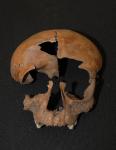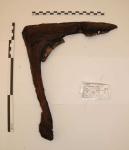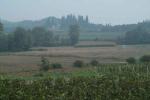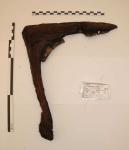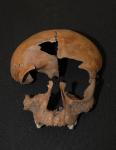Summary (English)
The 2012 excavation investigated the first phase of the palafitte settlement beginning with the burnt layers attesting the fire, which destroyed it. This event, which it is now known certainly involved all of the excavated area, determined the collapse of various timber structural elements that were well-preserved as they fell into the water or however into a very damp context. They have provided details about timber construction techniques in this period. In fact, several elements belonging to house walls such as perforated small planks or a joist with the ends cut on a slant and quadrangular cavity cut in the centre, probably part of the roof trusses were recovered. Fragmentary remains of terracotta building materials were also present. In fact, this year an accumulation of small blocks made of clay or a clayey impasto showing various states of firing was identified. A large number of these elements were fired in a manner sufficient to keep their original form and presented borders of various shapes, traces of wattle, and impressions of upright poles. Others presented a recurrent characteristic; a flattened border on which the impressions of a series of parallel canes were clearly visible. From observations made on site and the first attempts at reassembly, the burnt clay structure seemed to be sub-circular in plan, perhaps ending in a cupola. This may be a sort of silo for storing provisions or a small oven for cooking food.
As well as the structures, the fire also involved artefacts of various types and materials (pottery, stone, bone, metal), often exceptionally well-preserved, such as a large bi-conical vase, partially fragmented and deformed by exposure to heat, still with ears of cereal inside it.
This campaign was characterised by a very particular find: a human skull was found in the part of the excavation facing towards the centre of the lake, immediately above the layer relating to the fire. Its size and the preliminary dental analysis indicate it belonged to a child of 3-4 years of age. The cranium, the mandible missing, was found in correspondence with a thin peat layer, above two large sub-parallel horizontal beams. Over an area of about 2 m2, the zone was covered by a thin layer of bark (alder?), which also covered the skull. The discovery is of great importance, above all because it links to the theme of the cult of crania in the sphere of the palafitte culture, a question widely debated and but with little evidence from modern excavations. In the second place, the fact that it is a child poses another series of questions regarding the treatment of sub-adults in funerary practices. Further conclusions will have to await the continuation of this research.
- Marco Baioni - Civico Museo Archeologico della Valle Sabbia
Director
Team
- Anna Consonni - Università degli Studi di Milano
- Elisa Zentilini - Università di Verona
- Nicoletta Martinelli - Museo Civico di Storia Naturale di Verona
- Claudia Mangani - Museo civico G. Rambotti, Desenzano
- Tommaso Quirino - Università degli Studi di Milano
- Cristiano Nicosia - Consulenze in geoarcheologia e micromorfologia del suolo - Vicenza
- Andrea Tramelli - Università degli Studi, Milano, CdL in Scienze dei Beni culturali
- Renata Perego - CNR-I.D.P.A., Milano
- Cesare Ravazzi - CNR-I.D.P.A., Milano
- Piercarlo Spinelli - Associazione “Gruppo Grotte Gavardo”
- Emanuele Bertoli, Nicola Bonzanini, Luca Bortolotti, Bruno Busseni, Valeria Cerqui, Luca Dusi, Laura Fapassini, Ilaria Frison, Marina Giori, Beatrice Lavezzi, Andrè Macleod Hungar, Silvia Podavini, Sara Presazzi, Stefano Salvi, Mirko Seminario, Francesca Simoni, Michael Tolentini, Laura Vezzoni, Davide Vighenzi
- Maria Luisa Baraghetti, Andrea Consalvo, Anna Ferrarese, Alessandra Francesconi, Jessica Giaretta, Gloria Griso, Gessica Peroni, Maickol Quarena, Flavio Redolfi Riva, Caterina Scartozzi, Stefania Stevanin, Chiara Tomasone, Fabiano Trentin, Diego Voltolini
- Gabriele Bocchio - Associazione “Gruppo Grotte Gavardo”
- Carlo Pettini - Associazione “Gruppo Grotte Gavardo”
- Ezio Ferraresi
- Fiorenza Gulino
- Alessandro Baioni, Ivan Bresciani, Giampietro Candido, Emanuele Dal Miglio, Giambattista De Giuli, Federico Fusari, Ivan Gatta, Eligio Labigalini, Angelo Lando, Francesco Maioli, Eliseo Mora, Ezio Persavalli, Sergio Persi, Michela Simoni, Gianni Vezzoni
Research Body
- Museo Archeologico della Valle Sabbia - Gavardo
Funding Body
- Comune di Gavardo
- Comune di Polpenazze del Garda
- Regione Lombardia





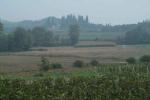
![Download [PDF]](/excavation/skins/fasti/images/results/download_sml.png)


